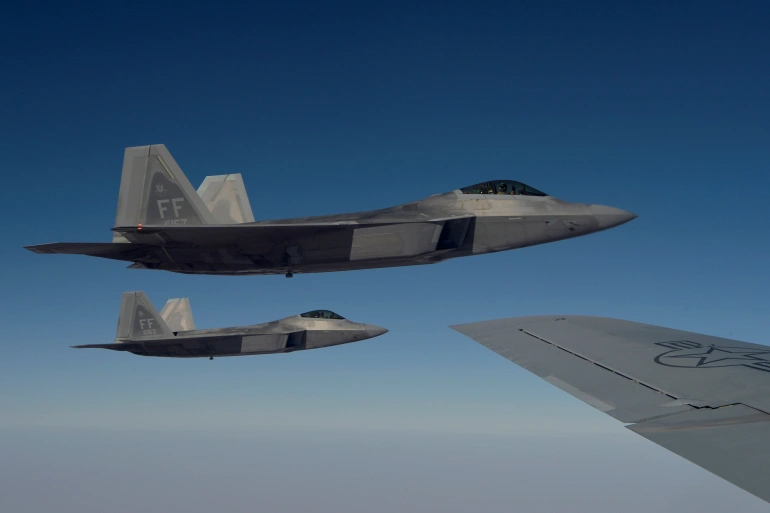The United States Of America (USA) has said it plans to send a guided-missile destroyer and fifth-generation fighter jets to the United Arab Emirates (UAE) following recent missile attacks by Yemen’s Houthi rebels.
According to US Secretary of Defense, Lloyd Austin, in a conversation with Abu Dhabi Crown Prince, Abu bin Zayed Al Nahyan, that the Pentagon would send the “guided-missile destroyer USS Cole to partner with the UAE Navy before making a port call in Abu Dhabi”.
Austin also told the Crown Prince that Washington would deploy fifth-generation fighter aircraft, a classification that includes US-made F-22 Raptor and F-53 Lighting II combat jets to “assist against the current threat”, in the UAE.
He added the deployment is a “clear signal that the United States stands with the UAE as a longstanding strategic partner”, during a readout at the Pentagon.
The announcement comes after the UAE experienced the third missile attack in recent weeks on Monday, January 31, 2022, which the US deployed Patriot interceptors to prevent, according to White House spokesperson, Jen Psaki.
Although the UAE has not been the major target of attacks by the Houthis, a Saudi-led military partnership backing Yemen’s internationally recognized government, a Monday, January 17, 2022 attack by the Houthi signals a distinct shift from Yemen to the UAE.
The drone-and-missile attack targeted Abu Dhabi’s oil facilities and airport, killing three foreign workers.
Exactly seven days later, on January 24, 2022, US forces stationed at Abu Dhabi’s al-Dhafra airbase also fired Patriot interceptors during a missile attack that forced soldiers to scramble to ditches for cover. Two ballistic missiles were shot down over the city, but no one was reported injured in that assault.
The UAE hosts about 2,000 US troops, who provide early-warning intelligence and collaborates on air defence. The base operates the deployment of US armed drones and F-35 stealth fighters.
The last Houthi-claimed attack against the UAE had been in 2018, before the latest series of assaults.
Shifting strategy
While the Houthis in recent years have largely targeted Saudi Arabia, which borders Yemen with drone and missile attacks, the most recent assault comes after the rebel group experienced a series of defeats inflicted by the UAE-backed Giants Brigades militia in Yemen.
Though the UAE announced it had completed its phased troop withdrawal from Yemen in February 2020, it maintains influence over tens of thousands of fighters in several armed groups in the country.
Meanwhile, while the US suspended its “offensive support” to the Saudi-led coalition in 2021, it has repeatedly said it will continue to give military support for defensive operations to its allies in the region.
US President, Joe Biden also told reporters last month (January) that he considered re-designating the Houthis as a “foreign terrorist organisation”, which rights groups say could drastically hinder aid delivery in the war-torn country.
Yemen’s war, which began when the Houthis seized the capital, Sanaa, in 2014, has created what the United Nations (UN) calls the world’s worst humanitarian crisis.
Breakdown of the UN’s Analysis
United Nations Children’s Fund (UNICEF) has said about 2.3 million Yemeni children below the age of five currently suffer from acute malnutrition, with 400,000 expected to suffer from life-threatening severe malnutrition in the coming months.
A report by the United Nations Development Programme (UNDP) in November 2021 projected that 377,000 people in Yemen would be killed by the beginning of 2022 by direct and indirect fallout from the eight years of fighting. It is estimated 70 percent of those would be children.
Following the most recent escalation in Houthi attacks, the Saudi-led coalition retaliated by conducting air raids that have killed dozens of civilians and destroyed infrastructure and services, including in the capital Sanaa, according to rights groups.
READ ALSO: George Quayson Committed A Criminal Offence- Gary Nimako





















